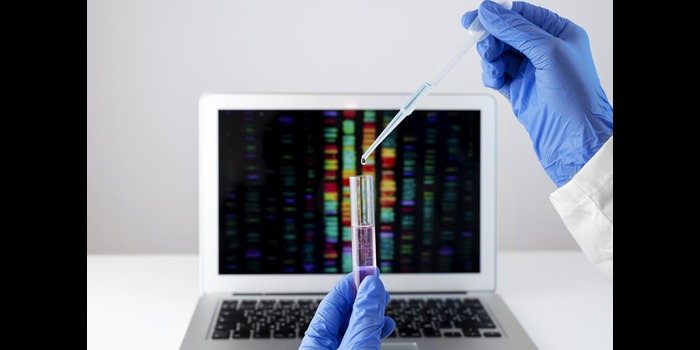IIT Madras, Denmark decode genetic disease switches
Share

A revolutionary study with great consequences for human health was carried out by scientists from the Indian Institute of Technology Madras (IIT Madras) and the Technical University of Denmark has discovered how interactions between genetic variants might act as “switches” to activate dormant metabolic pathways. The study appeared in Nature Communications on August. 27, 2025, it explains how gene-gene interactions over time can change cell metabolism, therefore providing critical knowledge about the genetic basis of complex illnesses. diabetes, neurodegenerative diseases, like cancer.
Under the supervision of Prof. Himanshu Sinha of the Department of Biotechnology, PhD candidate at IIT Madras Mr. Srijith Sasikumar carried out the cooperative research. Together with Dr. Shannara Taylor Parkins and Dr. Suresh Sudarsan of the Technical University of Denmark, they extensively worked. They show in their article, “Interaction of Genetic Variants Activates Latent Metabolic Pathways in Yeast,” how specific genetic variants in yeast may interact to release a dormant metabolic route that produces totally fresh cellular results. This discovery provides a vital guide for understanding how many genes work together to affect human health and disease.
The ramifications of the find go far beyond yeast, as Prof. Sinha noted, since it causes not many human diseases. from the interaction of several genes. He said, “The IIT Madras research offers a mechanistic framework for methodically investigating these interactions.” He stressed the need of coupling multi-omics with temporal analysis. methodologies that let scientists learn not only which pathways were altered but also when and how these changes happened. This temporal perspective, he argues, is particularly important for developmental and progressive diseases where the timing of gene interactions can be as significant as the interactions themselves.
Additionally, Prof. Sinha emphasized that novel vulnerabilities that may be targeted by treatments may emerge from the combining of gene variations to effectively reprogram metabolic pathways. By targeting these reprogrammed pathways, scientists may identify new drug targets and develop treatments taking into account the combined effects of genetic variations rather than focusing only on single mutations.
Lead researcher Mr. Sasikumar says the discovery offers a strong example of the continually changing area of genetics.”It’s like two switches at once—all He said, “All of a sudden, a secret backup circuit starts on and the whole system behaves differently.” Research done by his crew showed that genes do not work independently; instead, they interact in ways that could yield entirely novel results, some of which only manifest.during certain points in development or under duress. He observed that this knowledge is very relevant for illnesses like cancer or neurodegeneration, whose course is Dynamic and time-sensitive genetic interactions may affect the disease.
The study’s results draw particular attention to two yeast genetic variants, MKT1(89G) and TAO3(4477C), as a notable illustration of such interactions. Together studied, the arginine synthesis route was seen; but, when each variation was examined alone, this route was inactive. This interaction also slowed ribosome production, which produced what the researchers called a “metabolic trade-off” that improved yeast sporulation efficiency. Notably, they also showed that the arginine pathway was only required for mitochondrial activity in the double-variant background, which strengthens the theory that genetic interactions might produce new properties. redefine fundamental cellular mechanisms and dependencies. The results of this research have far-reaching implications. Knowledge acquired by means of biomarkers and drug targets that reflect the combined effects of genetic variations In medicine might open the door for tailored healthcare. Based on a person’s unique genetic profile, this would enable more accurate diagnoses, forecasts, and tailored treatment plans. Engineered gene interactions in biotechnology and synthetic biology could be utilized to trigger or suppress certain pathways, hence enabling for the better synthesis of metabolites, medicines, or even biofuels. Furthermore, the findings could be applied in microbial engineering and precision agriculture, where the production and sustainability of crops or industrial microorganisms might be much strengthened by designing plants or microorganisms exhibiting stress-tolerant or ideal qualities.
Besides its utility, the study establishes a new biological principle: genetic variant combinations can produce molecular effects that are simply not there when each variant functions separately. This completely changes how scientists view the impact of genetics on disease and health. Using , the scientists were able to accurately map the dynamic rewiring of cellular networks over time, therefore revealing the fine-grained mechanisms of these genetic switches. a temporal multi- omics technique combining metabolomics, proteomics, and transcriptomics.
As the study suggests, understanding these interactions may be the key to unlocking the complexities of many chronic and progressive diseases. Instead of searching for single “culprit” mutations, future research and medical practice could focus on how networks of genetic variants interact, evolve, and reshape the body’s internal systems. This shift could redefine both the diagnosis and treatment of diseases, pushing medicine toward more personalized, predictive, and preventive approaches.
The IIT Madras–Denmark collaboration thus represents a milestone in genetics and disease research. By uncovering how hidden metabolic pathways can be switched on by the interplay of genetic variants, the scientists have opened new possibilities for therapies, diagnostics, and innovations across medicine, biotechnology, and agriculture. Their findings affirm the growing recognition that the future of healthcare lies not in studying genes in isolation but in decoding the intricate web of interactions that sustain life and determine its vulnerabilities.








